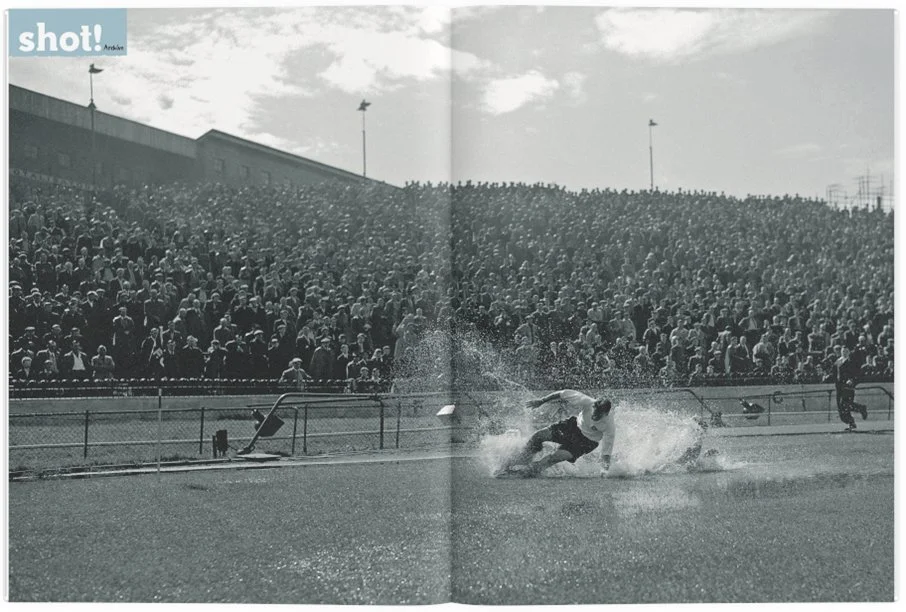Football Photography writing
From When Saturday Comes magazine
Tom Finney “Splash” 1965
Photograph by Johnny Horton ©PA
Published in When Saturday Comes 232, June 2006
As Tom Finney slid across a waterlogged Stamford Bridge pitch, PA photographer Johnny Horton captured this iconic picture, now known simply as “Splash”. Little did he know that 50 years later it would be an eradefining image of Finney and be recast in glorious 3D bronze outside Deepdale.
The statue project was managed by George Moss, then club financial controller and lifelong North End fan, to follow up the redevelopment of Deepdale and the opening of the National Football Museum there in 1998. When Moss met the sculptor, Peter Hodgkinson, they immediately knew the direction the commission would take. “There’s not a pub in Preston that doesn’t have this picture on the wall, the idea just presented itself,” Hodgkinson says.
He set about replicating the picture as accurately as possible – with a little sculptor’s licence. The face is turned down in the photo so the likeness was created from other images as Hodgkinson worked on the oneand half-times life-sized clay mould of Sir Tom. Also a PNE fan, the sculptor lived in the, luckily misplaced, fear that his team’s most famous player would end up looking like Prince Charles.
In the original photograph, the ball appears to have gone behind the defender challenging Finney, Chelsea’s Wally Bellett, but for the statue it was moved alongside an outstretched right foot, with the innovative fountain spray providing a unique finish.
The “Splash” photo has become an institution in Lancashire, used as a backdrop for Finney’s This Is Your Life appearance in 1988 and now available on everything from mugs to T-shirts. Usually it’s cropped tight, omitting much of the crowd, sky and pitch.
The modest Finney, now 84, was not keen on the idea of the statue at first, thinking it odd to be cast in bronze while still alive. But he proudly attended the unveiling in 2002. Johnny Horton was contacted by PNE, but sadly was not present. He’s now 86 and retired after a 40-year career; his son says that his father was flattered to hear about the statue, even if he finds it amusing that the picture should have become so revered. One small thing missing from the laudable project is that Horton’s original photo, without which the statue would not exist, is uncredited as the basis for the work.
Doug Cheeseman
Football Photography Writing

